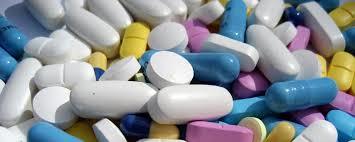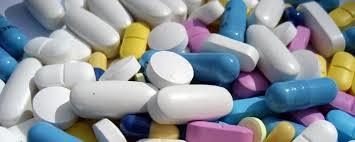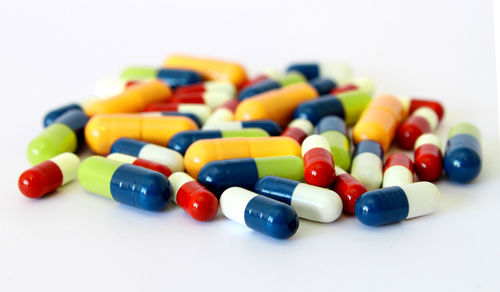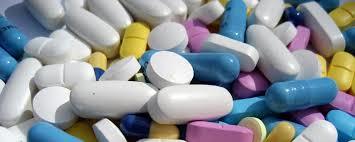
Fexofenadine Tablet
78 INR/Box
Product Details:
- Purity 99%
- Formulations Type General Drugs
- Formulations Form Tablets
- Gender/Age Group Adult Children
- Storage Instructions Dry Place
- Click to view more
X
Fexofenadine Tablet Price And Quantity
- 300 Box
- 78 INR/Box
Fexofenadine Tablet Product Specifications
- Dry Place
- 99%
- Adult Children
- General Drugs
- Tablets
Fexofenadine Tablet Trade Information
- Cash Advance (CA) Cash in Advance (CID)
- 300 Box Per Month
- 1 Months
- Yes
- Sample costs shipping and taxes has to be paid by the buyer
- Western Europe Central America Middle East South America Asia Eastern Europe North America Australia Africa
- All India
Product Description
Fexofenadine is an antihistamine (third-generation antihistamine) pharmaceutical drug used in the treatment of allergy symptoms, such as hay fever, nasal congestion, and Urticaria.Fexofenadine is a pharmacologically active metabolite of Terfenadine, is non-sedating anti-histamine with selective peripheral H1 receptor antagonist activity. Fexofenadine has been demonstrated to be safe and effective for children ages 25 years old and 611 years old in treatment of seasonal allergic rhinitis.
Exposure to pollen can cause your body to produce allergic symptoms, called hay fever. Cells in the lining of your nose release chemical called histamine when they come into contact with it. This leads to inflammation (rhinitis), which produces symptoms such as sneezing and a runny or blocked nose. Fexofenadine, an antihistamine, stops the effects of histamine and this helps to relieve these symptoms.
Urticaria is a condition where an itchy skin rash develops. The rash may be triggered by an allergy or it can be caused by some other factor which may not be known. If the rash lasts for longer than six weeks, it is referred to as chronic urticaria.
Fexofenadine is given to ease the symptoms of rash in people with chronic urticaria.Fexofenadine Hydrochloride is rapidly absorbed into the body following oral administration, with Tmax occurring at approximately 1-3 hours post dose. It prevents the aggravation of rhinitis and urticaria and reduces the severity of the symptoms associated with those conditions, providing relief from repeated sneezing, runny nose, itchy eyes, and general body fatigue.
Therapeutic Indication:
Fexofenadine HCl Tablet is indicated for the used to relieve the symptoms of seasonal and perennial allergic rhinitis (including hayfever). Used to relieve the symptoms of hayfever (seasonal allergic rhinitis) such as sneezing, itchy, watery or red eyes, and itchy, blocked or runny nose. It is also used to relieve the symptoms of urticaria otherwise known as hives or itchy rash.
Pharmacology:
Mechanism of Action:
Fexofenadine hydrochloride is an antihistamine with selective peripheral H1-receptor antagonist activity. Both enantiomers of fexofenadine hydrochloride displayed approximately equipotent antihistaminic effects. Fexofenadine inhibited histamine release from peritoneal mast cells in rats. In laboratory animals, no anticholinergic, alpha1-adrenergic or beta-adrenergic-receptor blocking effects were observed. No sedative or other central nervous system effects were observed. Radiolabeled tissue distribution studies in rats indicated that fexofenadine does not cross the blood-brain barrier.
Pharmacokinetics:
Absorption: Rapidly absorbed.
Distribution: Fexofenadine hydrochloride is 60% to 70% bound to plasma proteins, primarily albumin and 1- acid glycoprotein.
Metabolism:Approximately 5% of the total oral dose was metabolized.
Elimination:The mean elimination half-life of fexofenadine was 14.4 hours. Human mass balance studies documented a recovery of approximately 80% and 11% of the fexofenadine hydrochloride dose in the feces and urine, respectively. Because the absolute bioavailability of fexofenadine hydrochloride has not been established, it is unknown if the fecal component represents unabsorbed drug or the result of biliary excretion.
Contraindications:
Fexofenadine HCl is contraindicated in those patients who are hypersensitive to Fexofenadine.
Drug Interactions:
Fexofenadine hydrochloride does not undergo hepatic biotransformation and therefore will not interact with other medicinal products through hepatic mechanisms.
Co-administration of fexofenadine hydrochloride with erythromycin or ketoconazole has been found to result in 2-3 times increase in the level of fexofenadine concentrations in plasma. The changes were not accompanied by any effects on the QT interval and were not associated with any increase in adverse events compared to the medicinal products given singly.
Animal studies have shown that the increase in plasma levels of fexofenadine observed after co-administration of erythromycin or ketoconazole appears to be due to an increase in gastrointestinal absorption and either decrease in biliary excretion or gastrointestinal secretion, respectively.
No interaction between fexofenadine hydrochloride and omeprazole was observed. However, the administration of antacid containing aluminum and magnesium hydroxide gels 15 minutes prior to fexofenadine hydrochloride caused a reduction in bioavailability, most likely due to binding in the gastrointestinal tract. It is advisable to leave 2 hours between administration of fexofenadine hydrochloride and aluminum and magnesium hydroxide containing antacids.
Pregnancy & Lactation:
- Ask your doctor or pharmacist for advice before taking any medicine.
- Do not take Fexofenadine hydrochloride tablets if you are pregnant, unless necessary.
- Fexofenadine tablets are not recommended during breast-feeding.
Warning & Precaution:
This has been prescribed for the patient's specific condition only.
Keep the medicine out of reach of children.
Adverse Drug Reactions:
Trouble sleeping, headache, dizziness, nausea tiredness and sleepiness.
Storage:
Store in a cool, dry & dark place. Protected from direct sunlight.
Tell us about your requirement

Price:
Quantity
Select Unit
- 50
- 100
- 200
- 250
- 500
- 1000+
Additional detail
Mobile number
Email







